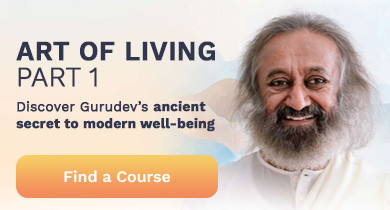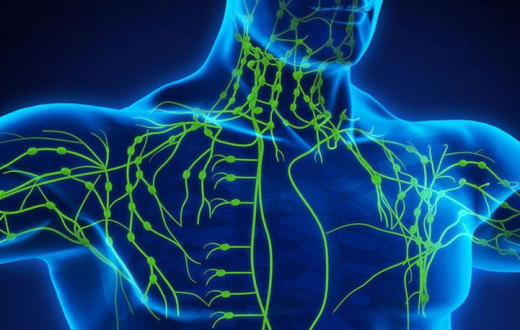By Sejal Shah
Are you struggling with pain? Try yoga! Yoga for chronic pain has been proven to be an effective pain management tool.
Living with chronic pain is very challenging. Even after taking high doses of prescription painkillers and anti-inflammatory drugs, the aching soon returns with increased intensity. You want to do something, anything, to stop the pain, but all efforts seem like a losing battle... Moving hurts. Doing nothing hurts. Ignoring it hurts even more.
When you're experiencing chronic pain, twisting and stretching your body may seem like the last thing you would want to do. But surprisingly, a regular yoga practice will help significantly relieve pain be it be acute pain or chronic pain.
Prevention is better than cure!
According to an ancient yoga aphorism, “Heyam Dukham Anagatam” which means that the purpose of yoga is to prevent suffering or misery even before it arises. Regular practice of yoga promotes a healthy and happy life and is likely to halt the onset of distress and illness. Having said this, yoga has also been very beneficial as a therapy in many ailments, as proven by modern research.
Understand the real roots of your pain:
Medical science believes that pain could be caused only by damage to the structure of the body. The solution is sought by looking for the source of chronic pain in bulging spinal discs, muscle injuries, some pathological conditions, and infections. Recent research, however, points to a very important source of chronic pain: the very pattern of your thoughts, emotions, expectations, perceptions, and memories. Chronic pain has its roots in a physical injury or illness, but it is also sustained by how that initial trauma affected the mind-body complex. Yet there are many who have severe long-standing pains and modern science cannot pinpoint any obvious physical issues. There is also a number of people whose chronic pain is embedded in their past loss, stress, trauma or grief.
This points to the fact that trying to fix the body with surgeries, pain medications, or physical therapy is not your only solution. By understanding chronic pain as a mind-body experience and using yoga’s toolbox of healing practices—including breathing exercises, meditation, and restorative poses—you can take charge of your life and move a step closer to finding real relief from pain.
Apart from chronic pain, there are “everyday” pain and aches like sore shoulders from slouching, pain in the back from stressful desk work, pain in the calves from standing for long periods, etc. Typically these are not very intense in nature, but in the form of subtle aches, muscle soreness, muscle pain, and uneasiness holding us back from being our 100%. Additionally, many adolescent girls and women may also suffer from menstrual cramps or menstrual pain. When neglected these can take the shape of chronic pains. These are generally due to low energy levels and accumulation of toxins caused by sedentary and desk-bound lifestyle with incorrect body posture and ergonomics, inadequate breathing, rest and water intake, eating unhealthy food, stress, tensions, and worries.
Yoga for chronic pain management
According to the National Institutes of Health, an official speaking at the American Pain Society’s annual meeting agreed that chronic pain is known to cause brain anatomy changes and impairments, but yoga can be an important tool for preventing or even reversing the effects of chronic pain on the brain.
Psychology Today recommends that if you're looking for an alternative to addictive pills to treat joint pain and other common aches, relief may be a yoga class away. A review of many years of studies conducted by researchers at Harvard Medical School finds that Yoga can help people with arthritis pain either from osteoarthritis, rheumatoid arthritis, or fibromyalgia, and even migraine, low back pain, and many other types of chronic pain conditions like sciatica, tension headaches, and myofascial pains.
As a yoga practitioner and teacher, I have seen myself and many of my students in chronic pains and mental agony arising out of it get immense relief from simple yoga practices. Here are five simple but powerful ideas from Yoga:
1) Yoga's fluid movements allow swollen or painful joints to glide smoothly over one another, increasing mobility, flexibility, and strength without excess wear and tear. The poses fetch necessary repairing agents, through a focused blood supply, towards healing that part.
It is more about moving your body rather than what pose you do. As a general guide: move easily and gently, in every direction you can, synchronizing your movement with your breath. Don't worry too much about the correctness of poses. It is more important to stay relaxed, breathe deeply, enjoy every movement, and acknowledge how you feel. When you find a place that feels painful and stiff, stay and breathe there! Then move further with ease.
2) Pranayama (Breathing practices) can be a powerful way to quickly relax the painful part. Your breath has a very deep therapeutic and soothing effect on your body-mind. Your incoming breath brings in fresh oxygen that gets healing energy to the painful part while your outgoing breath relaxes the affected area by releasing the toxins. Researchers from Ohio State University studied yoga practitioners, finding lower levels of the pro-inflammatory hormone - cytokine interleukin-6 in the bloodstream of women studied.
3) Meditation may be the most simple yet powerful yogic tool of all for managing chronic pain. Anyone can do it -- anytime, anywhere! A research-based recent article in Washington Post suggests that meditation and breathing practices could be the solution to overcome the opioids crisis. Incorporating SKY Breath Meditation into your daily routine would be highly beneficial. More about it later.
There is also evidence that meditation can reduce the transmission of pain signals from the thalamus, a major relay center in the brain, to the higher brain centers, where pain signals are interpreted. A study presented in 2016 at the 22nd Annual Meeting of the Organization for Human Brain Mapping in Geneva, Switzerland, found that meditation practice focused on the breath significantly reduced pain-related activity in the brain.
Meditation relaxes the mind and body by acknowledging and releasing feelings about pain or other challenges and letting go of tension. This helps develop a positive outlook. Focusing on negativity exacerbates pain. Meditation practice allows you to step back from that negative thinking. It brings focus to the present moment and allows you to interrupt the vicious cycle of negativity and pain. Learn some tips on how to get started with a meditation practice here.
4) Mudras (hand gestures) also help by using safe, easy to-do-yourself hand gestures that may be used even in chronic pain for both sustained and immediate pain relief, in some cases being almost as effective as painkillers.
5) Ending your sessions with relaxing savasana or yoga nidra will allow your body to absorb all the healing effects of your practice at a very deep level. It is very important that you don’t skip this. Yoga nidra or body scanning involves taking your attention to different parts of the body and simply observing with the mind’s eye what you find. This allows you to see your mind and body in action, to observe painful sensations as they arise, and to let go of struggling with them. When you do this, something remarkable happens: your suffering begins to melt away and you start feeling lighter and energetic.
While pain is inevitable, suffering is definitely optional
Ancient yogic scriptures mention that you are not just your body. When you start identifying yourself with the vast nature of your being, the physical discomforts stop bothering you to a great extent. Quoting an ancient text on life philosophy, the global spiritual master and meditation Guru, Sri Sri Ravi Shankar, says, “In your true nature, you are free the moment you see it’s not in you. If you have pain, observe it’s happening in the body. If there is tightness or joy in your mind, observe that it is tight, sad, unhappy, or happy. Just observe that you are not enjoying, and it is happening elsewhere, as though it is happening elsewhere.”
Take charge of your life
Instead of grumbling about pains, take charge of your life by indulging in loving self-care. Have a healthy and balanced diet consisting of fresh fruits, vegetables, whole grains, lean proteins from nuts and beans. Drink plenty of water to flush the pain out. Balance your work and personal life. Be physically active. Sleep well. Try ancient Ayurveda treatments like Marma (Energy work), Abhyanaga (Whole body massage), Vastis (specific treatments for back, neck and knees). Get involved in voluntary services (karma yoga) – the contentment you get from selfless services has proven so beneficial in managing chronic pains. Chant and dance – the yoga of bhakti or devotion bring much-needed faith that you are not alone, you are being taken care of by a higher power. You are being loved very dearly and you are protected.
All these yoga practices will improve your quality of life and help you to gain the confidence to deal with your chronic pain and associated anxiety and depression. As the heart starts feeling softer and happier the stiffness of the body dissolves too and vice-a-versa.
Along with yoga, you may also try managing your pain with acupuncture, natural pain relievers, or herbal remedies made from turmeric or curcumin, Epsom salt, willow bark (aka natural aspirin), peppermint oil, clove oil (in case of dental pain), other essential oils.
Join me here for a “Joint Freeing Sequence” for finding relief from pain right away:
Through this video, I will guide you on how paying attention to your basic joint movements and synchronizing the slow gentle moves with the breath help to release the pain, strain, and stiffness in the body. Simple and easy for everybody to practice...You can do this a couple of times a week and find yourself light and energized in the body and calm in mind.
Now enjoy as you see the tears of pain transform into sweet smiles of gratitude!
How SKY Breath Meditation can help you deal with chronic pain
SKY uses specific cyclical, rhythmic patterns of breath to bring the mind and body into a relaxed, yet energized state. Its effects have been studied in open and randomized trials, both in healthy and health compromised populations.
Research suggests that SKY reduces depression, anxiety, PTSD, and stress. It significantly increases feelings of well-being, optimism, and mental focus and improves emotion regulation. It also improves the quality of your sleep. All these together can help manage your pain to a great extent.
Join Beyond Breath, an online introductory session for SKY, and get all your questions answered by SKY experts.
Healing blessings!
Sejal Shah, E-RYT 500 Sri Sri Yoga Teacher, YACEP, C-IAYT, Meditation Teacher, SKY Instructor, NYU Post Graduate Medical School approved Yoga-CME retreat facilitator, Mind-Body Wellness Writer, Homeopath. She can be followed on YouTube, Instagram, Twitter, and Facebook.





























